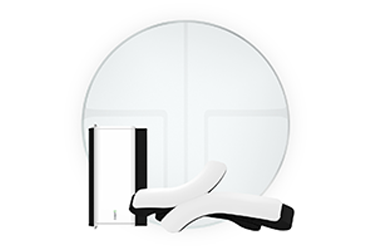Pacemaker implants are increasingly common. Good candidates for pacemakers are people with irregular, slow, or fast heartbeats. In the United States alone, pacemaker implants have risen 56% in the last two decades, but many people with cardiovascular issues fail to recognize the symptoms at first. After receiving a pacemaker implant, patients often report feeling clearer headed and more energetic. Read below to find out more about pacemakers and their impact on health, wellness, and mental clarity.
What is a pacemaker and how does it work?
Pacemakers allow people with abnormal heart rates to lead normal lives. They consist of a pulse generator—a small battery-powered box placed inside the chest—and electrodes, which are insulated wires with sensors attached to the heart. If a pacemaker picks up on abnormal electrical activity in the heart, it delivers a perfectly timed shock, bringing the heart back into a normal rhythm.
What does a pacemaker do for you?
Most often, pacemakers are used to speed up slow heart rates, but in some cases, they are used to slow down fast heart rates. If the heart beats too quickly, the heart’s chambers never fill up with enough blood, and if the heart beats too slowly, the heart never circulates enough blood. Pacemakers normalize slow, fast, and irregular heart rates, and as a result, people with pacemakers can do many of the activities people without pacemakers can do, including exercising.
Who needs a pacemaker?
Pacemaker users are not automatically unhealthy. Lifelong endurance athletes sometimes require a pacemaker to keep their resting heart rate high enough. Otherwise healthy people with irregular heart rhythms may need a pacemaker to normalize their heart rhythms. Heart disease, aging, or taking heart-slowing medications called beta blockers can also lead to pacemaker use. Pacemaker users fall all over the map, and because pacemakers are implanted, they often blend into the crowd.
Why is a pacemaker implanted?
Pacemakers are implanted to protect the device and give electrodes access to the heart. Pacemakers are fairly easy to implant. During the procedure, patients only need local anesthesia. After a pacemaker implant, most patients are at home and comfortable within twenty-four hours.
What are the signs of needing a pacemaker?
Fatigue, dizziness, lightheadedness, fainting, and the inability to exercise without getting out of breath are all potential signs of needing a pacemaker. Symptoms like fatigue and dizziness are somewhat vague and subjective. Medical providers use non-invasive Electrocardiogram (ECG) tests to monitor the heart’s electrical activity. Using ECG data, patients and their providers can decide, with more certainty, if a pacemaker would be a good fit. If the patient prefers a more hands-on approach, QardioCore wearable ECG monitor provides real-time data on the Qardio App. Medical providers can also remotely access their ECG data. QardioCore gives medical providers a clearer picture of their patients’ heart health by attaching hard data to subjective symptoms like fatigue.
Can you have a heart attack if you have a pacemaker?
While pacemakers can greatly improve a person’s quality of life, pacemaker users can still experience heart attacks. Pacemakers are designed to regulate heart rhythms, not to remove plaque from arteries or reverse heart disease.
Check out our article ”Heart attack: causes, symptoms, treatment and prevention” to learn more.
Can other devices interfere with my pacemaker?
MRI machines, powerful magnets, cell phones, headphones, security systems, and even household devices can interfere with pacemakers. As a result, pacemaker users have to choose their products, especially their medical devices, carefully. For pacemaker, users consult your doctor or pacemaker manufacturer before using any smart devices.
Qardio products simplify creating a healthy lifestyle for anyone striving for a stronger, fitter body. QardioArm blood pressure monitor offers an easy way to record blood pressure data without using traditional, awkward – and potentially uncomfortable – blood pressure cuffs. If you have a pacemaker always consult your doctor or pacemaker manufacturer before using QardioArm. QardioBase wireless smart scale can be used with a pacemaker when only using ‘Weight Mode’.
Post contributed by Allison Almanzar.
Sources:
Reuters Health
John Hopkins Medicine
University of Manchester
American Heart Association




